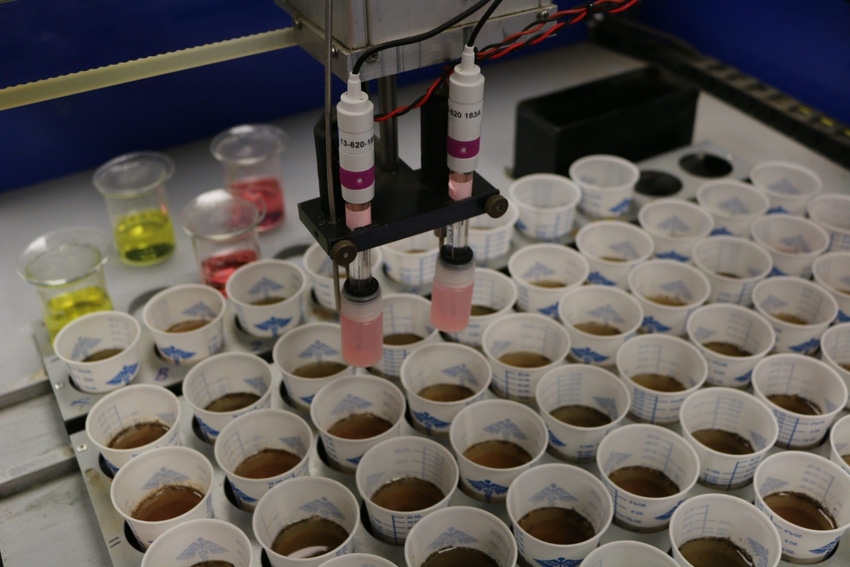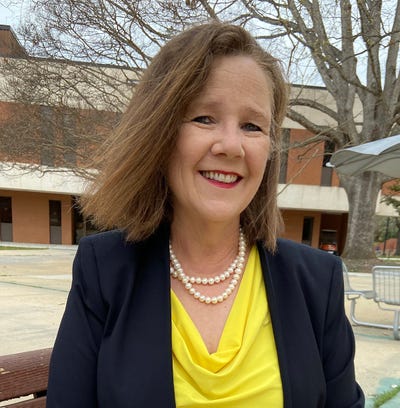
Lime is a very important soil amendment used to grow crops. To help ensure the correct amount is applied where it is needed most, the Clemson University Precisnio Agriculture Team has developed the Reverse Lime Rate Calculator.
This calculator, or web app, is useful for farmers as well as gardeners. It uses soil pH (acidity level), buffer pHand applied lime rate to provide an estimated soil pH. Kendall Kirk, a precision agriculture engineer who helped develop the calculator, said using this tool may be particularly useful this year in choosing where to place lime as supplies may be limited.
“Farmers expressed concerns this year that they may not be able to get enough lime to satisfy their needs,” Kirk said. “So, we developed this tool to calculate resulting soil pH as a function of the amount of lime applied. With input costs rising in 2022, we recognized the opportunity to also add value to our traditional lime rate calculator by adding lime cost calculations to allow growers to compare costs from different suppliers or across different products. Growers also can gain perspective of cost per acre for comparison to their other input costs.”
The Reverse Lime Rate Calculator evaluates resulting pH when recommended lime rates cannot be satisfied, such as when availability, time or field conditions are limiting. The developers call it a “Reverse” Lime Rate Calculator because it does not provide a lime recommendation; instead, it displays a resulting soil pH from a user-specified lime rate. Growers who need to know a recommended lime rate for a target soil pH can use the Lime Rate Calculator.
User inputs for the Reverse Lime Rate Calculator include soil pH and buffer pH from soil test results, mixing depth, lime rate and relative neutralizing value for lime source. Soil samples can be submitted to the Clemson Agricultural Service Laboratory for for testing. Soil test fact sheets are available from the Clemson Home and Garden Information Center.
Shortly after developing the Lime Rate Calculator, which is used for increasing soil pH, the researchers recognized the need for a tool to use for lowering soil pH for certain acid-loving crops, such as blueberries. The Soil Acidification Calculator was developed based on information provided by the Clemson Agricultural Service Laboratory. This tool was built from a table of recommended aluminum sulfate rates as a function of soil pH and desired soil pH from the Clemson Ag Service Lab.
“We built an equation around the data in this table, which is what is used by the calculator for determining outputs,” Kirk said.
The Reverse Lime Rate and Soil Acidification calculators, as well as other calculators and web apps developed by the Clemson Precision Agriculture Team can be found at https://bit.ly/CU_CalculatorsAndWebApps.
Plant nutrient availability is directly related to soil pH. With the rising price of fertilizers this year, Clemson scientists say it is more critical than ever to get soil pH correct. When soil pH is too low or too high, it can lead to nutrient deficiency and sometimes toxicity. If a farmer or gardener applies fertilizer recommended in a lab report but doesn’t correct the soil pH, then a large percentage of his or her fertilizer investment may be wasted.
Shannon Alford, Clemson Agricultural Service Laboratory director, said applying the correct amount of lime is imperative to achieving target soil pH and making nutrients available to plants.
“Both of our Lime Rate Calculators allow farmers to consider the types of liming products and current costs to make the best selection for their needs,” Alford said. “These factors are important to consider in times when the supply chain is interrupted and costs are not stable.”
Tests are conducted in the laboratory using the Adams-Evans buffer method. The buffer is a solution that acts like fast-acting lime when incubated with a soil-water mixture. Lime recommendations are generated based on how much the pH of the soil-water mixture changes when the buffer is added. Clemson Agricultural Service Laboratroy scientists use this method to determine lime requirements for each client’s specific soil sample.
Michael Plumblee, Clemson Cooperative Extension Service corn and soybean specialist, said using the Reverse Lime Rate Calculator (app) will save growers time and money.
“This app takes out the manual calculation part of determining liming rates,” Plumblee said. “It also allows for the ability to compare several rates rather fast compared to doing the math by hand. This app will help farmers save money by making sure that the appropriate rates of lime are being applied based on soil sample results. Putting a closer eye on all of our inputs and the rates we apply these inputs ultimately will help increase profits and reduce costs where applicable.”
Information provided will be beneficial for maximizing nutrient availability “especially in a year where every ounce counts,” he said.
“Using this app also will help ensure soils are limed to an appropriate pH so that plant-available nutrients can be maximized,” Plumblee said. “If we have soils at appropriate pH levels, we may be able to utilize nutrients that are currently in the soil rather than needing to add additional inputs to make up the difference to maximize yield. If we can better utilize what we have built up in the soil, we could see a reduction in the total amount of fertilizer applied in a single application or growing season.”
About the Author(s)
You May Also Like






